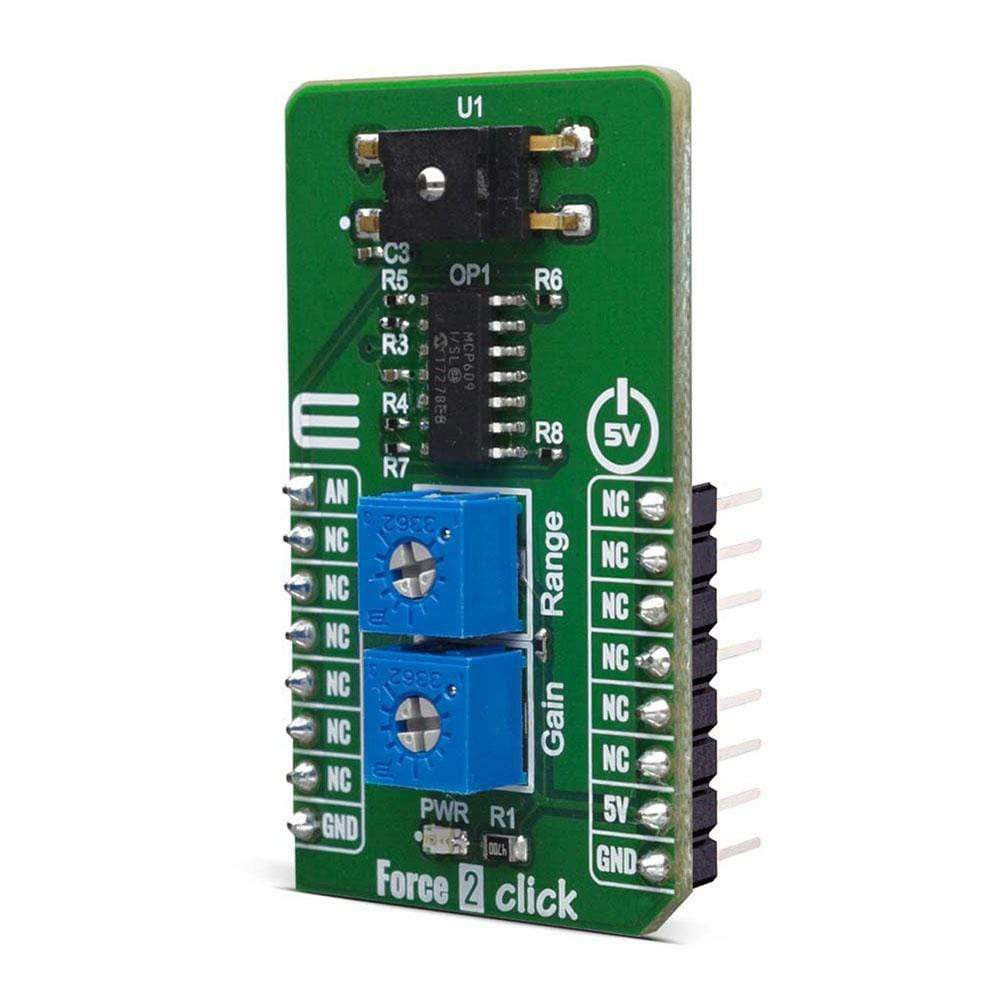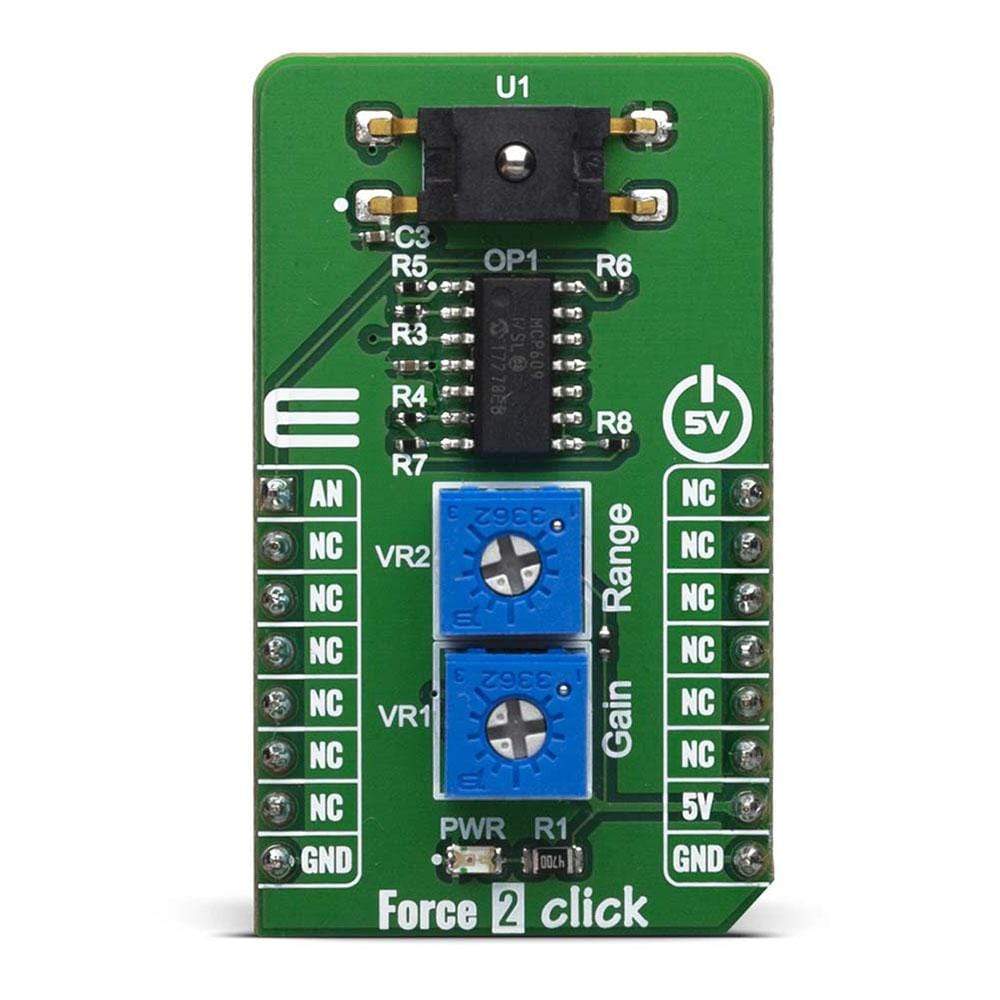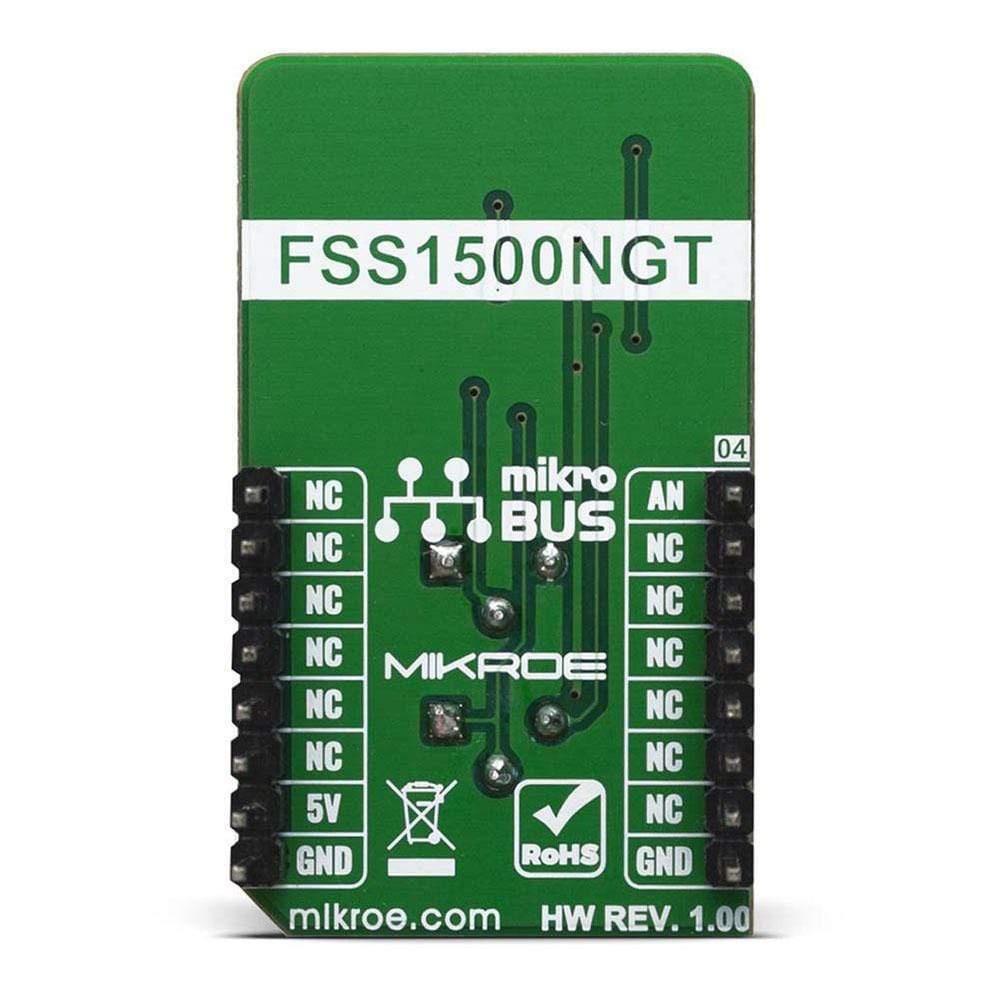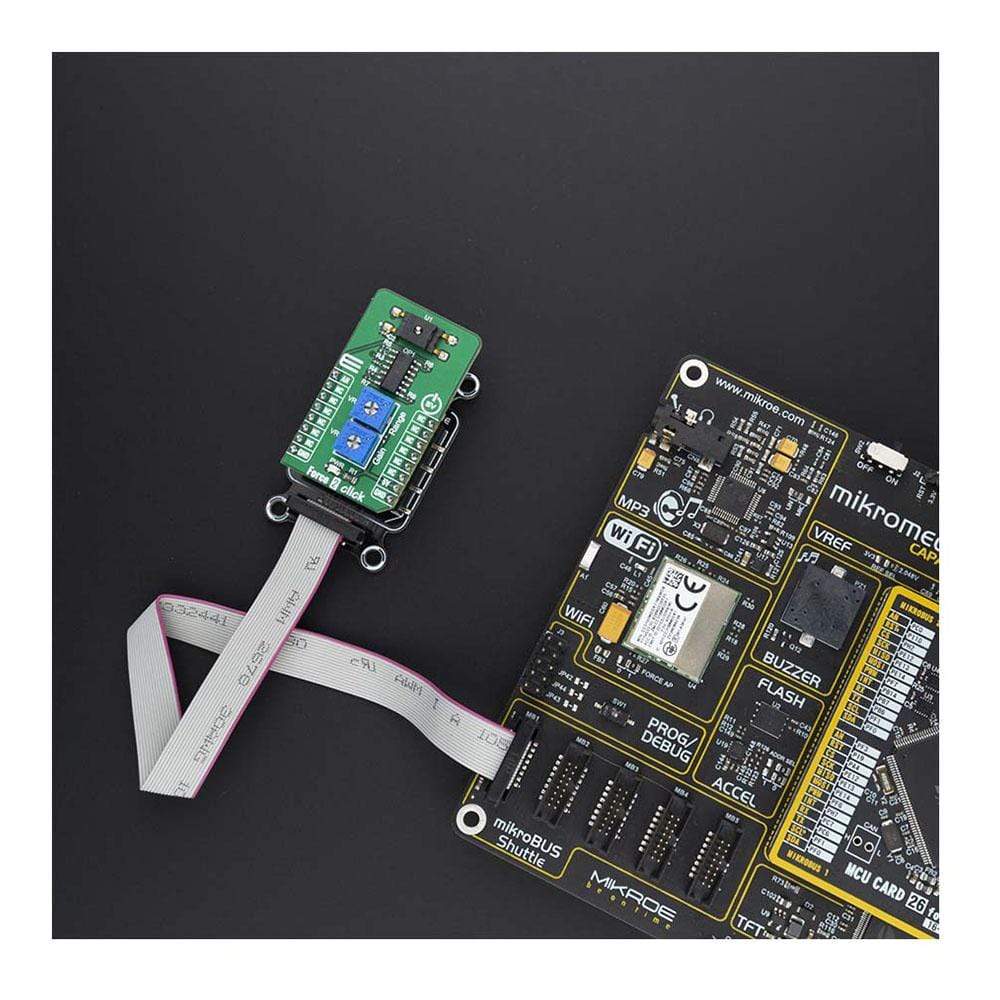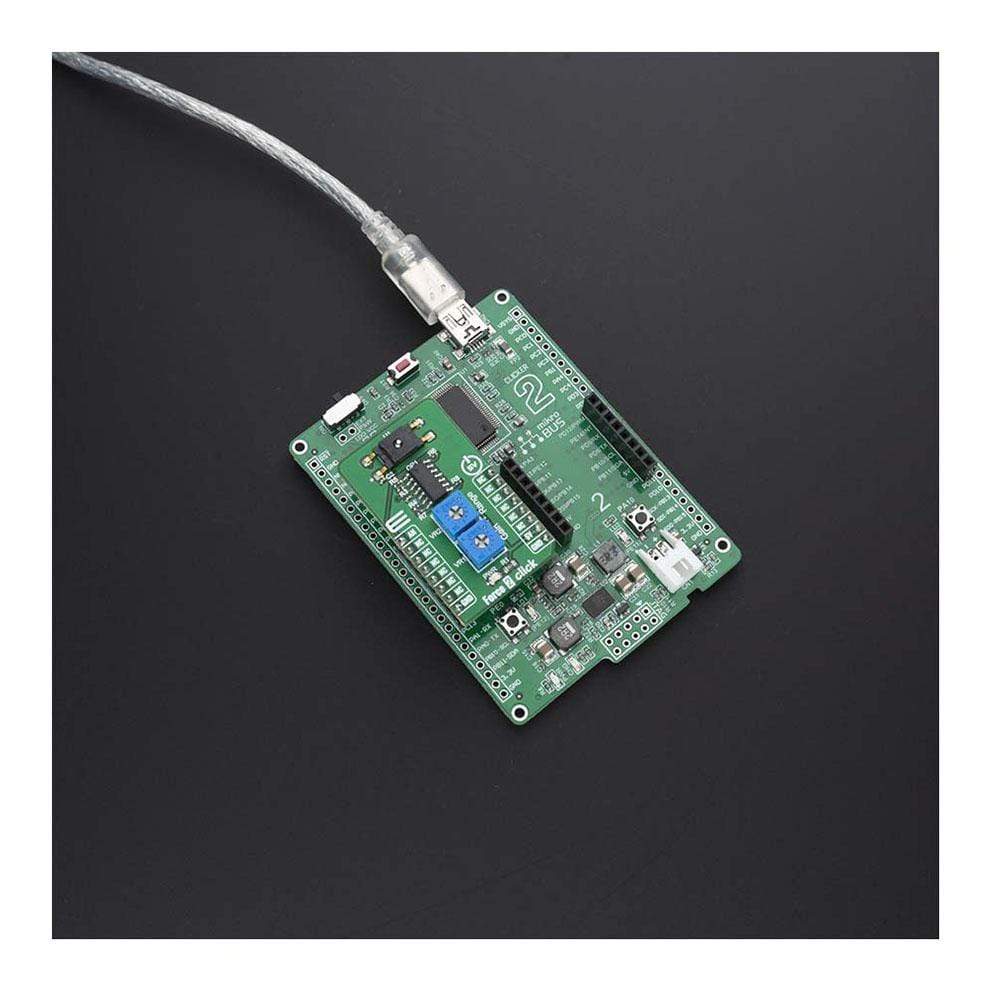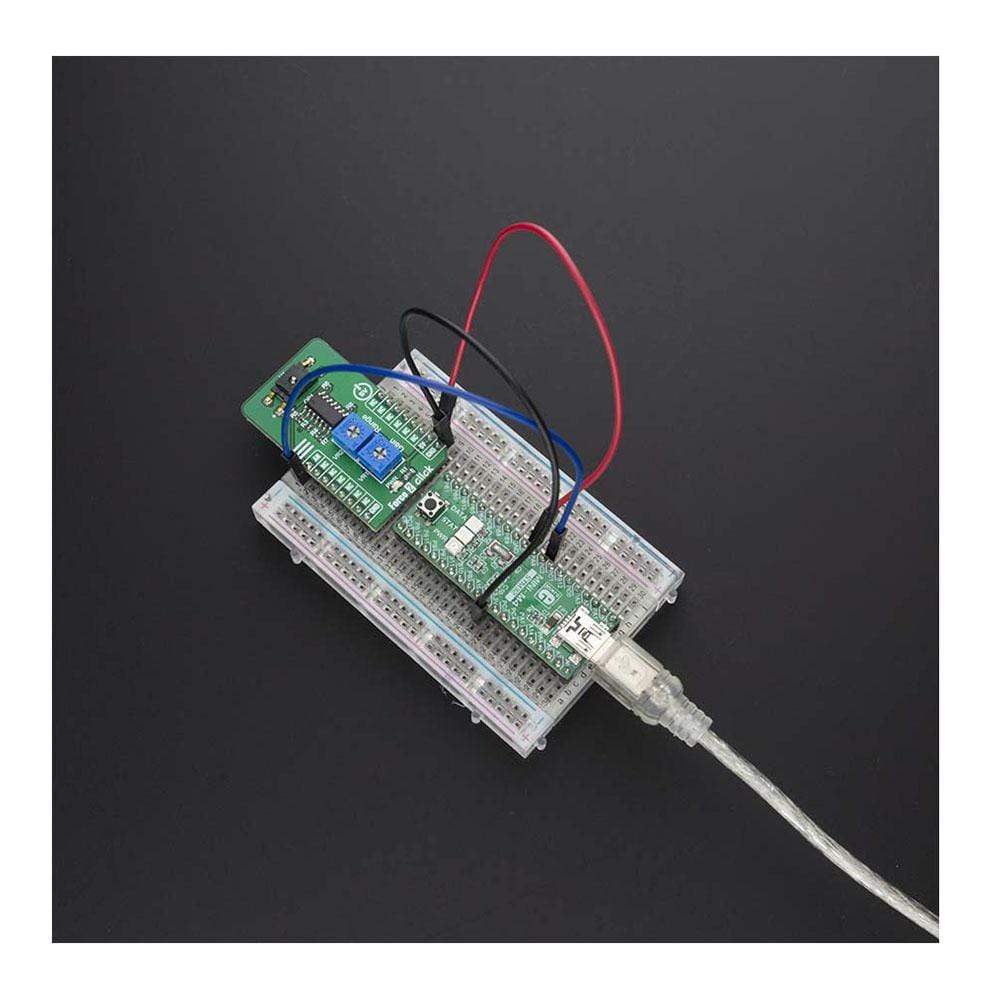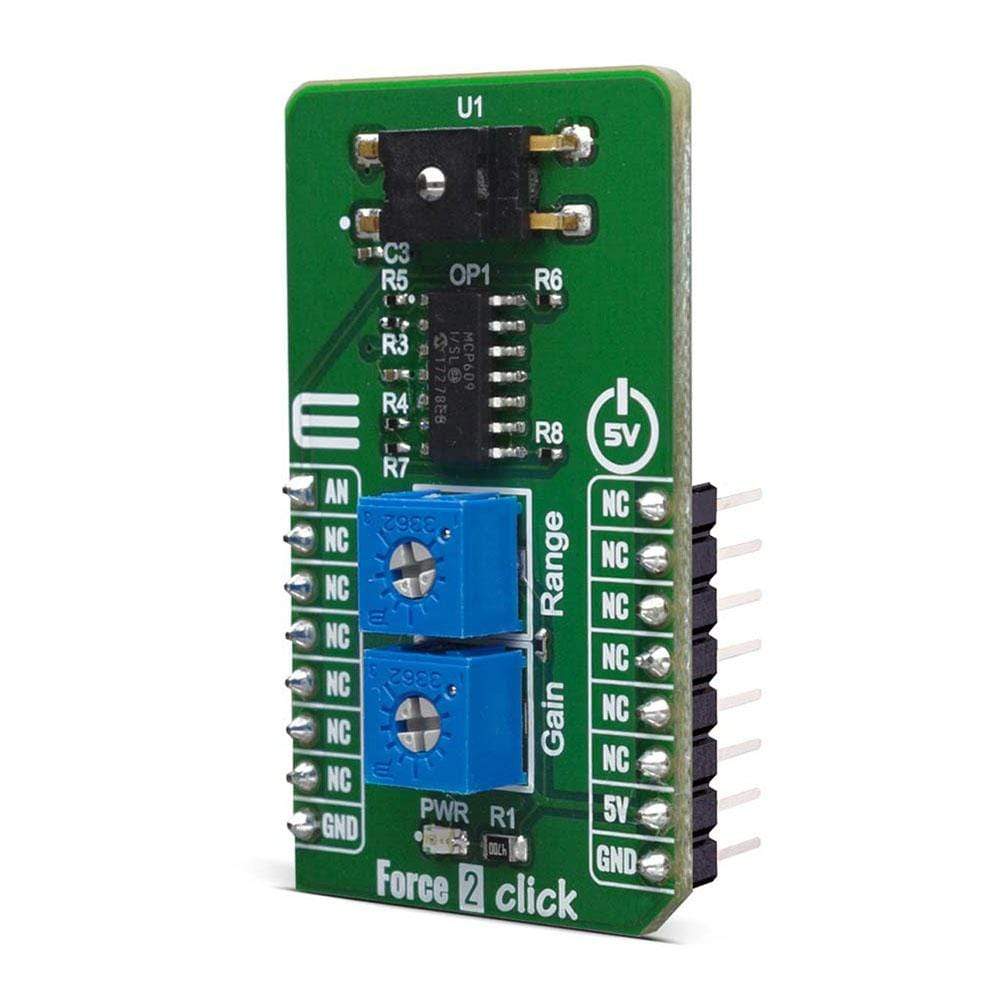
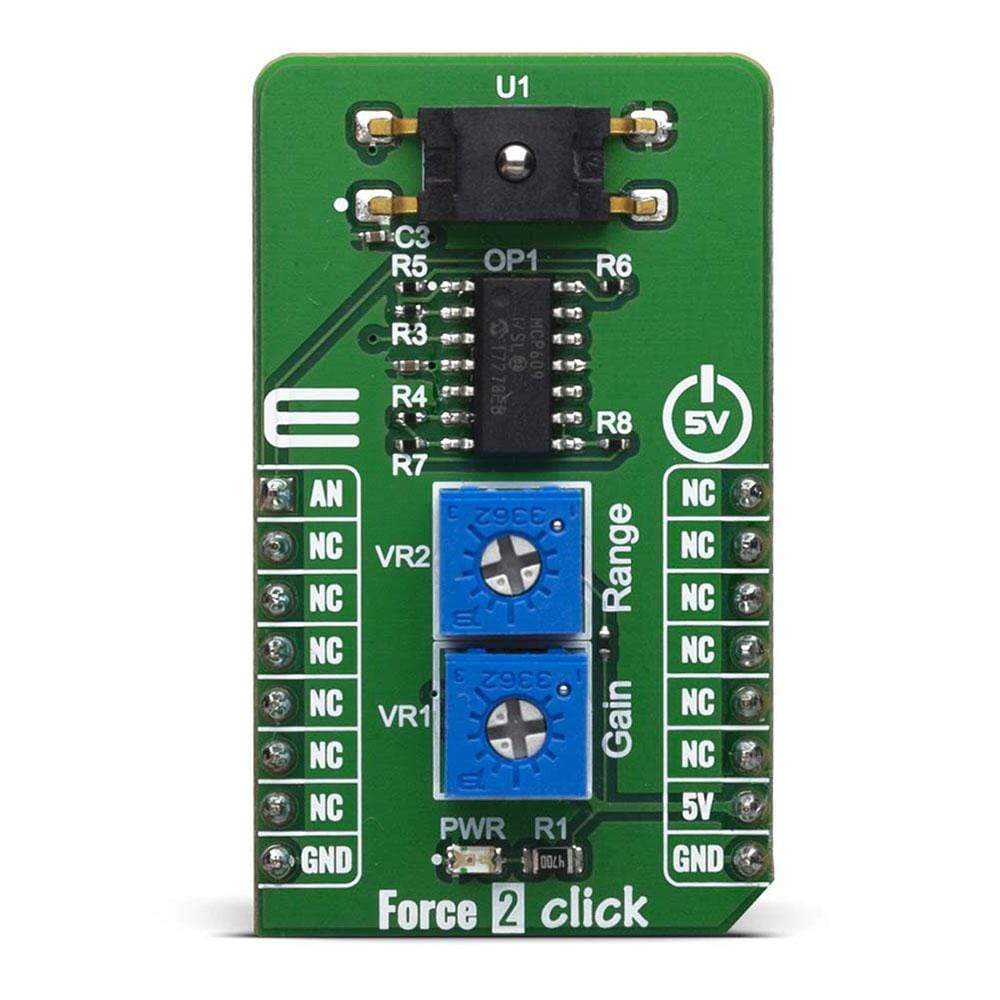
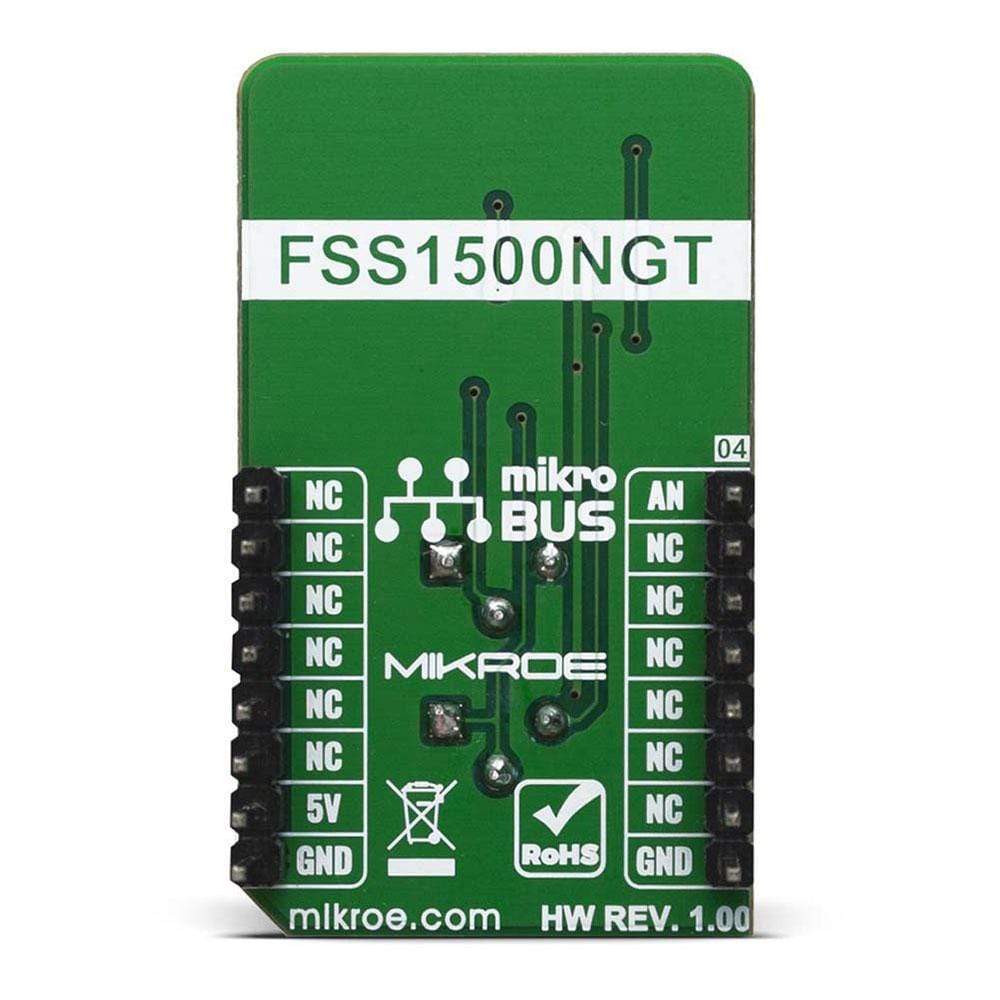
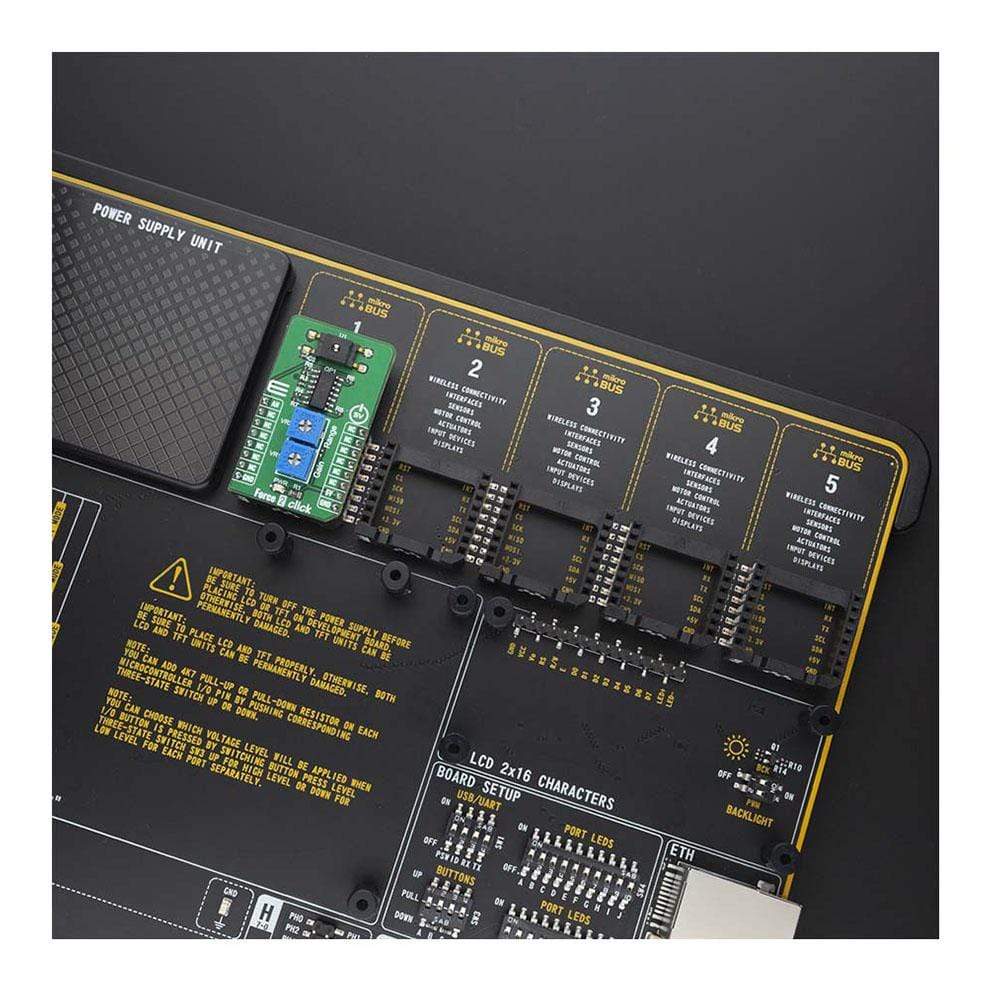
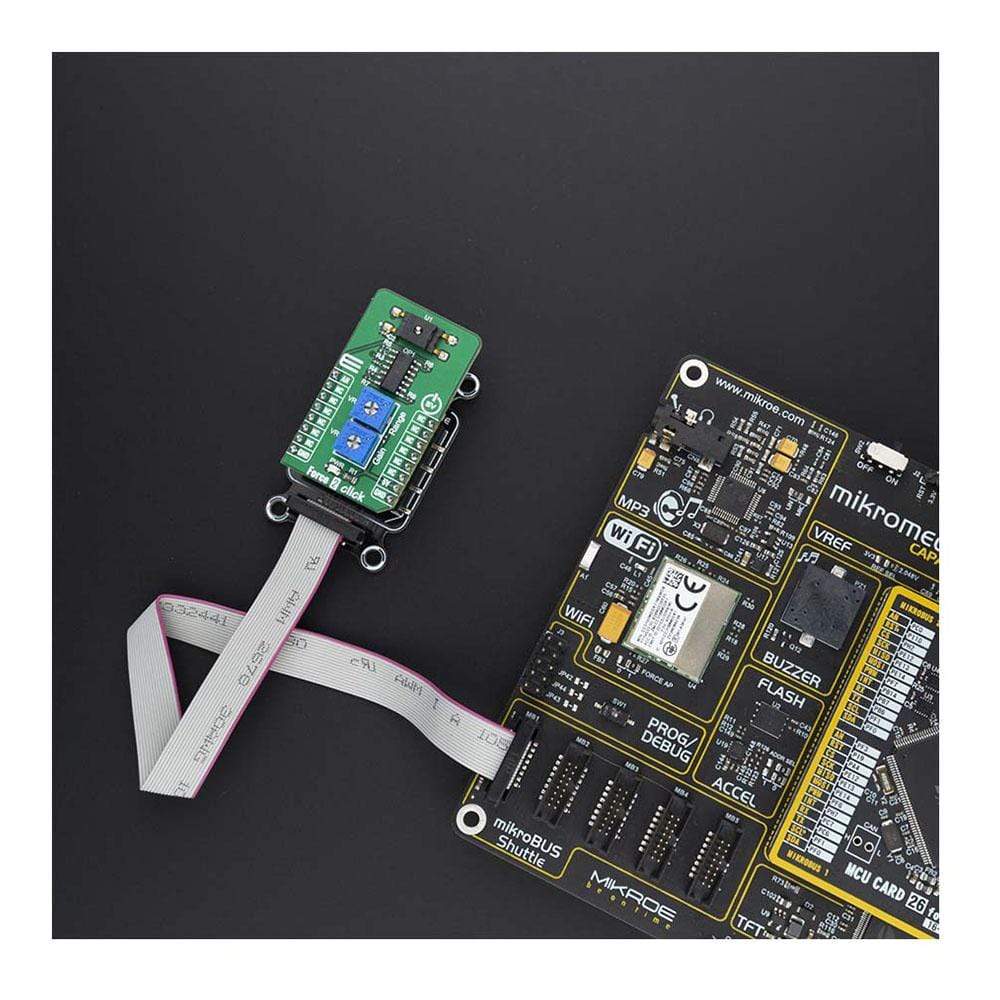
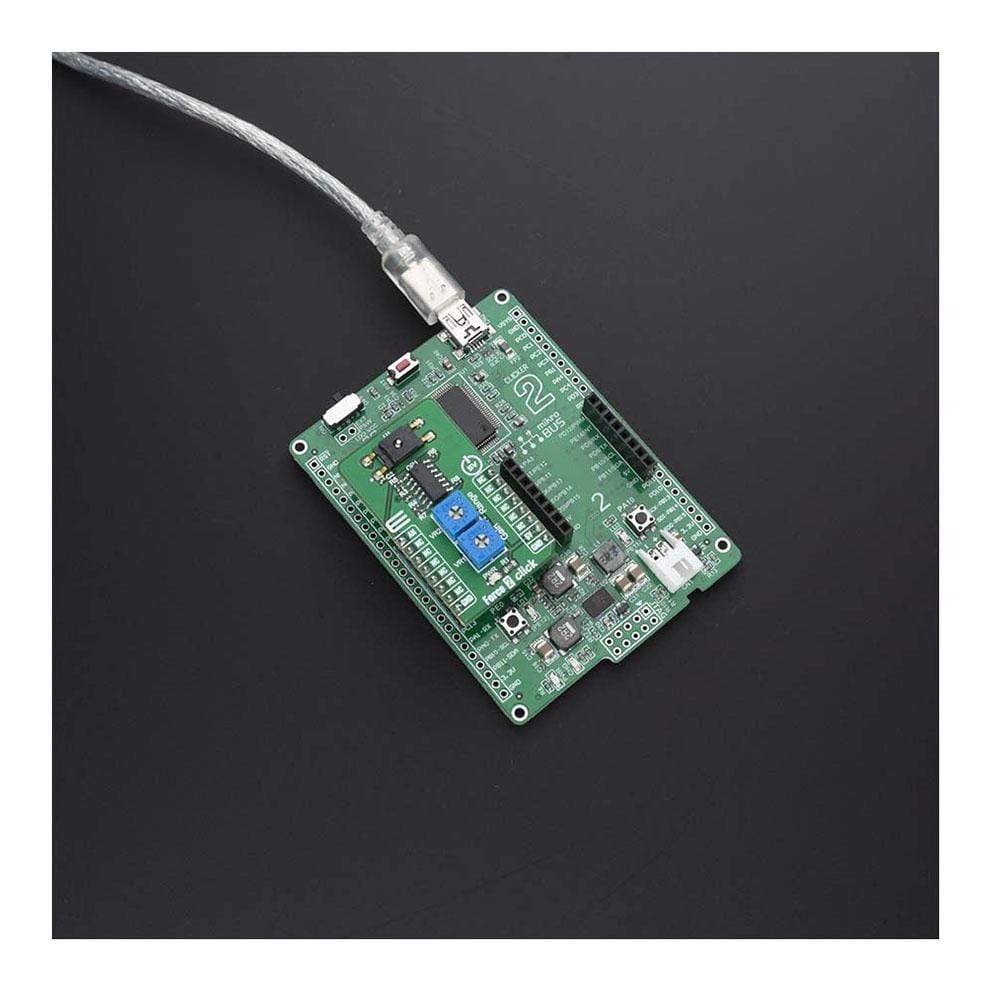
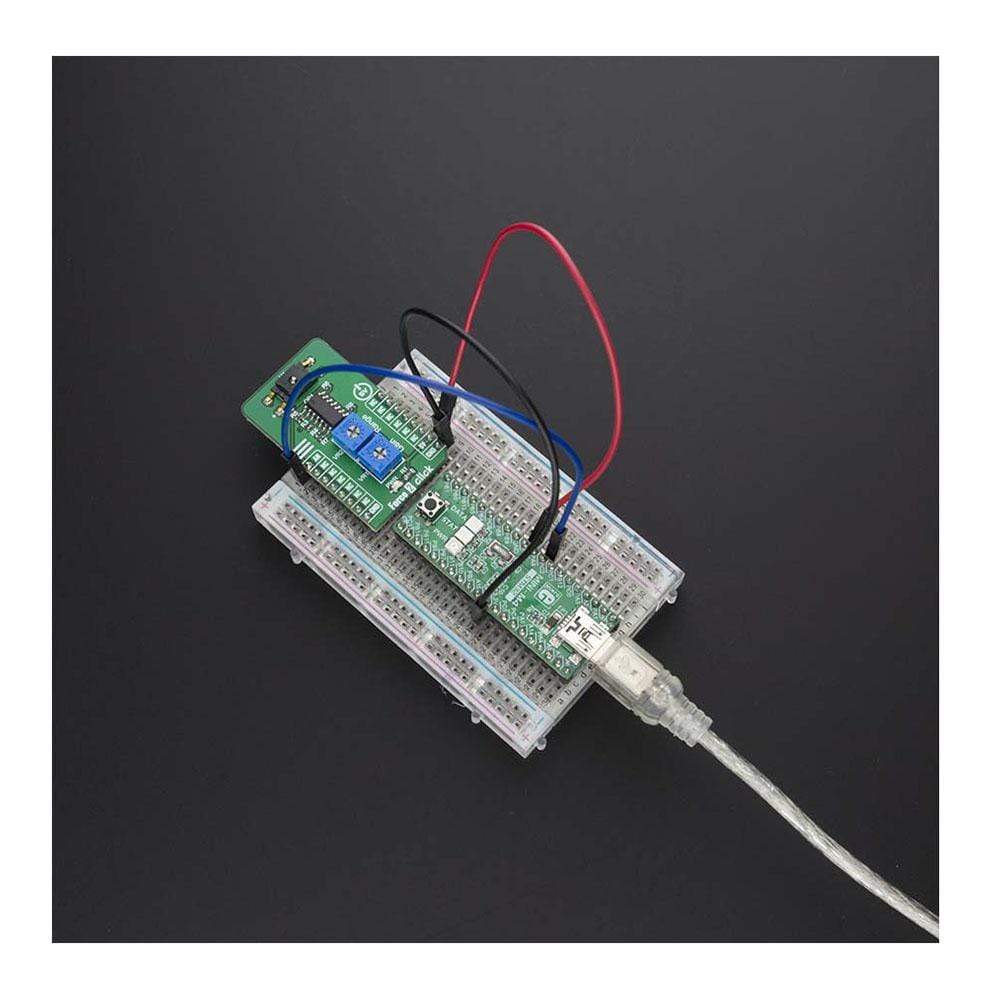
Overview
The Force 2 Click Board™ is a mikroBUS™ add-on board with circuitry for implementing Honeywell’s FSS1500NGT Series force sensors into your projects (with a single zone force-sensing resistor included with the click). This Click Board™ utilizes FSS1500NGT force sensor which is designed to be one of the most reliable force sensor available as illustrated by 20 million Mean Cycles to Failure (MCTF) at 25 °C [77 °F] rating. This low profile Surface Mount Technology (SMT) sensor allows for automated assembly on a printed circuit board, often helping the customer to reduce assembly costs while maintaining precise and reliable force sensing performance in a compact commercial-grade package.
The Force 2 Click Board™ is supported by a mikroSDK compliant library, which includes functions that simplify software development. This Click Board™ comes as a fully tested product, ready to be used on a system equipped with the mikroBUS™ socket.
Downloads
La carte Force 2 Click Board™ est une carte complémentaire mikroBUS™ dotée de circuits permettant d'intégrer les capteurs de force de la série FSS1500NGT de Honeywell dans vos projets (avec une résistance de détection de force à zone unique incluse avec le Click Board). Cette carte Click Board™ utilise le capteur de force FSS1500NGT qui est conçu pour être l'un des capteurs de force les plus fiables disponibles, comme l'illustre la valeur nominale de 20 millions de cycles moyens avant défaillance (MCTF) à 25 °C [77 °F]. Ce capteur à technologie de montage en surface (SMT) à profil bas permet un assemblage automatisé sur une carte de circuit imprimé, aidant souvent le client à réduire les coûts d'assemblage tout en maintenant des performances de détection de force précises et fiables dans un boîtier compact de qualité commerciale.
La carte Force 2 Click Board™ est prise en charge par une bibliothèque compatible mikroSDK, qui comprend des fonctions qui simplifient le développement logiciel. Cette carte Click Board™ est un produit entièrement testé, prêt à être utilisé sur un système équipé du socket mikroBUS™.
| General Information | |
|---|---|
Part Number (SKU) |
MIKROE-4046
|
Manufacturer |
|
| Physical and Mechanical | |
Weight |
0.019 kg
|
| Other | |
Country of Origin |
|
HS Code Customs Tariff code
|
|
EAN |
8606018717101
|
Warranty |
|
Frequently Asked Questions
Have a Question?
Be the first to ask a question about this.

